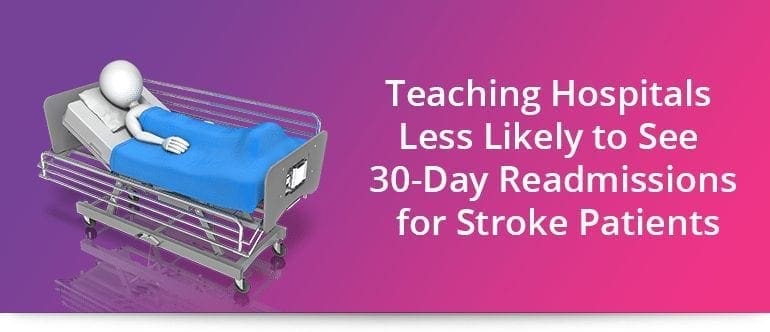Call us toll-free: 800-878-7828 — Monday - Friday — 8AM - 5PM EST

By Jeff Lagasse for Healthcare Finance
Although re-admissions have fallen by 3 percent, patients discharged from non-teaching hospitals faced a significantly higher risk of readmission.
Stroke patients appear to receive better care at teaching hospitals with less of a chance of landing back in a hospital during the early stages of recovery, according to new research from The University of Texas Health Science Center at Houston.
The findings have potential implications for costs at all hospitals, as facilities with worse-than-average 30-day readmission rates are subject to reimbursement penalties from the Centers for Medicare and Medicaid Services.
The study — an analysis of 30-day readmission rates for both Medicare and privately insured patients with different types of stroke — showed that although readmissions have fallen by 3 percent per year on average between 2010 and 2014, patients discharged from nonteaching hospitals faced a significantly higher risk of readmission, mainly due to having another stroke, related complications or septicemia, a serious blood infection.
Readmissions have become a focus for improving both costs and care quality, and the authors hope to set national performance benchmarks for readmissions levels among stroke patients of all ages.
The overall decline in readmissions was not attributed to reduced stroke recurrence, which in fact increased in some cases, but more a result of a drop in readmission rates for other high-volume conditions likely to affect stroke patients, who tend to be older and have additional health issues.
Results revealed more than 90 percent of all 30-day stroke-related readmissions were unplanned and, depending on the stroke type, up to 13.6 percent were deemed potentially preventable.
The greatest danger of readmission applied to patients with hemorrhagic stroke, a more serious form caused by a bleeding vessel in the brain, which carried a 13.7 percent likelihood. By contrast, patients with ischemic stroke, caused by a blocked vessel, faced a 12.4 percent risk.
Patients with more severe stroke tended to be transferred to academic hospitals, which showed steady readmissions rates regardless of the number of stroke cases that were admitted — suggesting better care. Patients at nonacademic hospitals seem more prone to stroke recurrence, and associated conditions like septicemia.
Non-teaching hospital stroke patients accounted for 46.4 percent of all patients, and the disparity between readmission rates compared to teaching hospitals widened as the number of stroke patients treated at the nonteaching hospitals grew.
The difference became statistically significant when hospitals discharged 300 stroke patients per year. At 500 patients, the increased risk of readmission was 1 percent — which doesn’t sound like much, but represents millions of patients.
Greater adherence to quality-of-care metrics, use of telestroke technology and organization of care delivery, as well as having adjoining outpatient clinics, were among the features common at teaching hospitals, which could give these centers a competitive edge in patient care, the researchers wrote.
Because of that, the research highlights useful information which individual hospitals can use to identify issues and take measures to prevent secondary complications of stroke.
